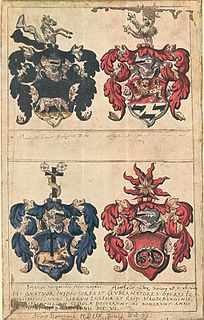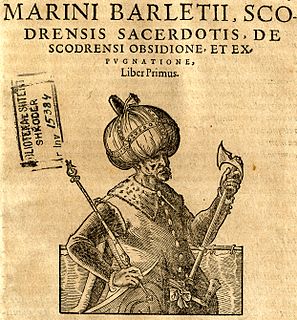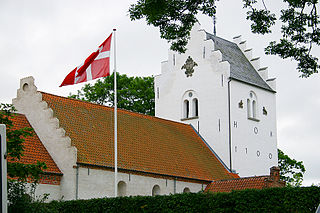 W
WAnnales Ecclesiastici, consisting of twelve folio volumes, is a history of the first 12 centuries of the Christian Church, written by Caesar Baronius.
 W
WThe Annals of Ulster are annals of medieval Ireland. The entries span the years from AD 431 to AD 1540. The entries up to AD 1489 were compiled in the late 15th century by the scribe Ruaidhrí Ó Luinín, under his patron Cathal Óg Mac Maghnusa, on the island of Senadh-Mic-Maghnusa, also known as Senad or Ballymacmanus Island, near Lisbellaw, on Lough Erne in the kingdom of Fir Manach (Fermanagh). Later entries were added by others.
 W
WThe Book of Degrees of the Royal Genealogy was the first official work of historiography produced in the nascent Tsardom of Russia. It was commissioned by Macarius, Metropolitan of Moscow from Ivan the Terrible's personal confessor, Andrew, in 1560. This vast work of codification recast historical data compiled from medieval Russian chronicles so as to suit Ivan's tastes and ambitions in the wake of his coronation as the first Russian Czar.
 W
WCronica Walliae is a manuscript of chronological history by Humphrey Llwyd written in 1559. Llwyd translated versions of a medieval text about Wales' history, Brut y Tywysogion, from Welsh and Medieval Latin into English. He also added historical material from Matthew Paris and Nicholas Trivet, as well as from other well known historians. It is the first history of Wales written in English and contains material about ancient rulers, with some material based on legends. Llwyd's work gives a history description of Wales that was originally written in the early part of the sixteenth century by Sir John Prise of Brecknockshire, Wales.
 W
WHistoria general de las Indias is the account by Francisco López de Gómara of the Spanish conquest of the Aztec Empire. The first printing was in December 1552, in the workshop of Agustín Millán in Zaragoza, published under the title La istoria de las Indias
 W
WHistoria verdadera de la conquista de la Nueva España is a first-person narrative written in 1576 by military adventurer, conquistador, and colonist settler Bernal Díaz del Castillo (1492–1581), who served in three Mexican expeditions; those of Francisco Hernández de Córdoba (1517) to the Yucatán peninsula; the expedition of Juan de Grijalva (1518), and the expedition of Hernán Cortés (1519) in the Valley of Mexico; the history relates his participation in the fall of Emperor Moctezuma II, and the subsequent defeat of the Aztec Empire.
 W
WHistory of a Voyage to the Land of Brazil, Also Called America, is an account published by the French Huguenot Jean de Léry in 1578 about his experiences living in a Calvinist colony in the Guanabara Bay in Rio de Janeiro, Brazil. After the colony dissolved, De Léry spent two months living with the Tupinambá Indians.
 W
WHolinshed's Chronicles, also known as Holinshed's Chronicles of England, Scotland, and Ireland, is a collaborative work published in several volumes and two editions, the first edition in 1577, and the second in 1587. It was a large, comprehensive description of British history published in three volumes.
 W
WThe Magdeburg Centuries is an ecclesiastical history, divided into thirteen centuries, covering thirteen hundred years, ending in 1298; it was first published from 1559 to 1574. It was compiled by several Lutheran scholars in Magdeburg, known as the Centuriators of Magdeburg. The chief of the Centuriators was Matthias Flacius. Lutheran theologian Werner Elert argued that due to its revolutionary critical method of presenting history, it is the basis of all modern church history.
 W
WThe Maire of Bristowe is Kalendar is a book compiled in the late fifteenth century by Robert Ricart, town clerk of Bristol, England. The work consists of six parts giving a history of England and of the city of Bristol, a list of civic officers, and details of local customs and ceremonies. Commissioned by mayor William Spencer, the Kalendar was started circa 1478–79. Scribed on vellum, separated by leaves of parchment, the book was not reproduced in print until the nineteenth century in Lucy Toulmin Smith's edition, which omitted some of the content. It is regarded as one of the earliest examples of a town chronicle outside London.
 W
WThe Nikon Chronicle or Patriarch's Chronicle is a massive compilation and edition of East Slavic chronicles undertaken at the court of Ivan the Terrible in the mid-16th century. The compilation was named after Patriarch of Moscow and all Rus' Nikon, who owned a copy. In the 18th century it was published under the name The Russian Chronicle According to Nikon's Manuscript.
 W
WRelación breve de la conquista de la Nueva España is the account of friar Francisco de Aguilar, who in his youth took part in the Spanish conquest of the Aztec Empire as a conquistador under the command of Hernán Cortés.
 W
WShinchō kōki (信長公記), is the chronicle of Oda Nobunaga, compiled in Edo period based on records by Ōta Gyūichi (太田牛一), a warrior who followed Nobunaga. Shinchō kōki covers from 1568, when Nobunaga entered Kyoto until he died in 1582. The compiled chronicle consists of 16 volumes and is considered "mostly factual" and "reliable". There are number of manuscripts with different titles, as Azuchiki (安土記) and Shinchōki (信長記). The Chronicle is not only often quoted on the subjects related to Oda Nobunaga himself, but on other subjects as well, such as the art of tea.
 W
WThe Siege of Shkodra is a book written by a Shkodran priest, Marin Barleti, about the Ottoman siege of Shkodra in 1478, led personally by Mehmed II, and about the joint resistance of the Albanians and the Venetians. The book also discusses the Ottoman siege of Shkodra in 1474. The book was originally published in 1504, in Latin, as De obsidione Scodrensi. Barleti was an eyewitness of the events.
 W
WThe Skibby Chronicle is a Danish chronicle written in Latin and dating from the 1530s. The original manuscript was found during 1650, walled in behind the altar of Skibby Church. It was printed in Latin 1773 and translated into Danish 1890-1891.
 W
WThe Zimmern Chronicle is a family chronicle describing the lineage and history of the noble family of Zimmern, based in Meßkirch, Germany. It was written in a Swabian variety of Early New High German by Count Froben Christoph of Zimmern (1519–1566). The chronicle is an eminent historical source of information about 16th century nobility in South-West Germany, its culture and its values. It is also an important literary and ethnological source for its many folkloristic texts. The text has survived in two manuscripts, both in possession of the Württembergische Landesbibliothek in Stuttgart.